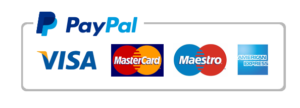Formulating a Family Care Plan
Formulating a Family Care Plan
I Identifying Data
· Name: __________________________________________________________________________________________________
· Address: __________________________________________________________________________________________________
· Phone number(s):_____________________________________________________________________________________________
· Household members (relationship, gender, age, occupation, education):____________________________________________________
· Financial data (sources of income, financial assistance, medical care; expenditures):___________________________________________
· Ethnicity: __________________________________________________________________________________________________
· Religion: __________________________________________________________________________________________________
· Identified client(s):______________________________________________________________________________________________
· Source of referral and reason: ________________________________________________________________________________________________________________________________________________________________________________________________________________________________________________________________________________________________________________________________________________________________________________________________________________________
II Genogram
· Include household members, extended family, and significant others
· Age or date of birth, occupation, geographical location, illnesses, health problems, major events
· Triangles and characteristics of relationships
III Individual Health Needs (for each household family member)
· Identified health problems or concerns: ________________________________________________________________________________
· Medical diagnoses: _____________________________________________________________________________________________
· Recent surgery or hospitalizations: _________________________________________________________________________________
· Medications and immunizations: _________________________________________________________________________________
· Physical assessment data: ______________________________________________________________________________________
· Emotional and cognitive functioning: _______________________________________________________________________________
· Coping: _____________________________________________________________________________________________________
· Sources of medical and dental care: ____________________________________________________________________________
· Health screening practices: ____________________________________________________________________________________
IV Interpersonal Needs
· Identified subsystems and dyads:________________________________________________________________________________
· Prenatal care needed: _________________________________________________________________________________________
· Parent–child interactions:_______________________________________________________________________________________
· Spousal relationships:_________________________________________________________________________________________
· Sibling relationships:_________________________________________________________________________________________
· Concerns about older members:___________________________________________________________________________________
· Caring for other dependent members:________________________________________________________________________________
· Significant others:____________________________________________________________________________________________________________________________________________________________________________________________________________________________________________________________________________________________________________________
V Family Needs
· A. Developmental
· Children and ages:____________________________________________________________________________________________
· Responsibilities for other members: _____________________________________________________________________________
· Recent additions or loss of members:_____________________________________________________________________________
· Other major normative transitions occurring now:____________________________________________________________________
· Transitions that are out of sequence or delayed:_____________________________________________________________________
· Tasks that need to be accomplished:_______________________________________________________________________________
· Daily health-promotion practices for nutrition, sleep, leisure, child care, hygiene, socialization, transmission of norms and values: _____________________________________________________________________________________________________________________________________________________________________________________________________________________________________
· Family planning used:_______________________________________________________________________________________
· B. Loss or Illness
· Nonnormative events or illnesses:______________________________________________________________________________
· Reactions and perceptions of ability to cope:________________________________________________________________________
· Coping behaviors used by individuals and family unit:_________________________________________________________________
· Meaning to the family:_________________________________________________________________________________________
· Adjustments family has made:________________________________________________________________________________
· Roles and tasks being assumed by members:_________________________________________________________________________
· Any one individual bearing most of responsibility:_____________________________________________________________________
· Family idea of alternative coping behaviors available:____________________________________________________________________
· Level of anxiety now and usually:_________________________________________________________________________________
· C. Resources and Support
· General level of resources and economic exchange with community:_________________________________________________________
· External sources of instrumental support (money, home aides, transportation, medicines, etc.):____________________________________
· Internal sources of instrumental support (available from family members):___________________________________________________
· External sources of affective support (emotional and social support, help with problem solving):_____________________________________
· Internal sources of affective support (who in family is most helpful to whom?): _________________________________________________
· Family more open or closed to outside?______________________________________________________________________________
· Family willing to use external sources of support?_______________________________________________________________________
· D. Environment
· Type of dwelling:________________________________________________________________________________________________
· Number of rooms, bathrooms, stairs; refrigeration, cooking:_______________________________________________________________
· Water and sewage:______________________________________________________________________________________________
· Sleeping arrangements:_____________________________________________________________________________________________
· Types of jobs held by members:_______________________________________________________________________________________
· Exposure to hazardous conditions at job:___________________________________________________________________________
· Level of safety in the neighborhood:____________________________________________________________________________________
· Level of safety in household:________________________________________________________________________________________
· Attitudes toward involvement in community:___________________________________________________________________________
· Compliance with rules and laws of society:____________________________________________________________________
· How are values similar to and different from those of the immediate social environment?_____________________________________
· E. Internal Dynamics
· Roles of family members clearly defined?______________________________________________________________________
· Where do authority and decision making rest?_____________________________________________________________________
· Subsystems and members:__________________________________________________________________________________
· Hierarchies, coalitions, and boundaries:________________________________________________________________________
· Typical patterns of interaction:_______________________________________________________________________________
· Communication, including verbal and nonverbal:__________________________________________________________________
· Expression of affection, anger, anxiety, support, etc.:________________________________________________________________
· Problem-solving style:________________________________________________________________________________________
· Degree of cohesiveness and loyalty to family members:___________________________________________________________________________________________________________________________________________________________________________
· Conflict management:________________________________________________________________________________________
__________________________________________________________________________________________________________
VI Analysis
· Identification of family style:__________________________________________________________________________________
· Identification of family strengths:_____________________________________________________________________________
· Identification of family functioning:____________________________________________________________________________
· What are needs identified by family? __________________________________________________________________________________________________________________________________________________________________________________________________________________________________________________________________________________________
· What are needs identified by community/public health nurse?________________________________________________________________


